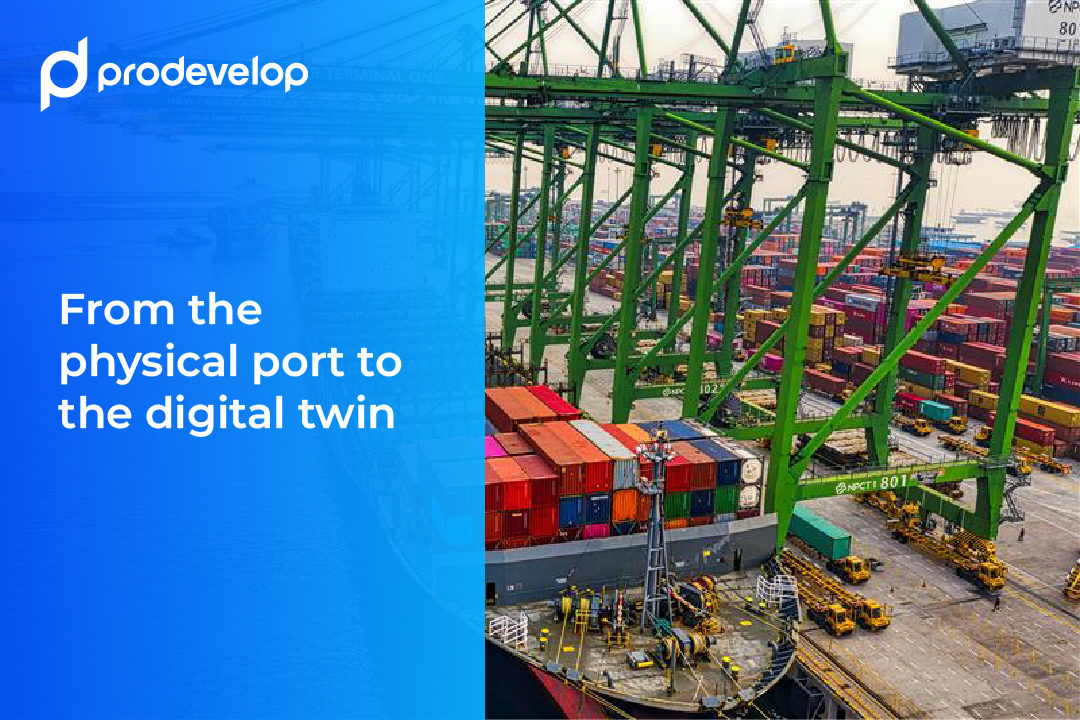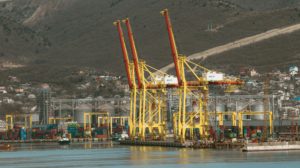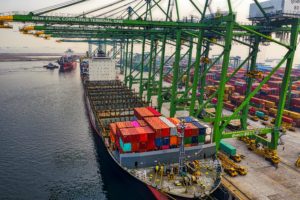The digital revolution in the maritime sector is advancing rapidly, and one of the concepts having the greatest impact is the Digital Twin. In the context of port terminals, this technology creates a virtual replica of processes and assets, enabling a new way to manage operational complexity and improve efficiency.
In this article, we explore what a Digital Twin means for ports, its benefits, and real-world use cases already making a difference in terminal optimization.
What is a Digital Twin in the Port Sector?
Definition and concept
A Digital Twin is a dynamic virtual representation of a port terminal, its assets, and processes. Unlike a simple static model, the digital twin is continuously fed with real-time operational data, creating an accurate and updated reflection of reality.
Difference from traditional simulation
Traditional simulation allows the prediction of hypothetical scenarios under fixed conditions. However, the Digital Twin goes a step further: it updates in real time and continuously learns from data generated by sensors, operating systems, and external sources. This makes it a predictive and prescriptive tool, ideal for port operations simulation.
Practical Applications in Container Terminals
Yard workflow simulation
With a digital twin, terminals can analyze how containers move across the yard, detect bottlenecks, and test new layouts or allocation rules to increase productivity.
Crane and equipment optimization
Digital Twins enable more efficient coordination of gantry cranes and autonomous vehicles (AGVs), reducing idle time and maximizing equipment utilization.
Reducing unnecessary moves and energy consumption
By eliminating redundant container and equipment moves, terminals achieve significant energy savings and more sustainable operations, reducing their carbon footprint.
Key Benefits for Ports and Terminals
Bottleneck prediction
Predictive models integrated into the digital twin can anticipate congestion before it happens, allowing proactive decisions to maintain smooth operations.
Enhanced safety and fewer errors
Simulating operations in a virtual environment allows procedures to be tested safely, reducing the risk of incidents in real operations and minimizing human error.
Cost savings and greater resilience
By optimizing resources and minimizing failures, terminal digital twins generate a significant return on investment while strengthening resilience against external disruptions.
Real Use Cases and Global Trends
Examples in Europe and Asia
Several leading ports in Europe and Asia have already implemented terminal digital twin projects, achieving gains in productivity, reduced vessel waiting times, and more flexible operational management.
Integration with predictive models and Big Data
The future lies in combining Digital Twins with artificial intelligence algorithms and port big data platforms, creating environments capable of anticipating demand and optimizing processes autonomously.
Conclusion
The digital twin is not just an analysis tool, but a true platform for the transformation of future smart ports. Its ability to integrate real-time data, simulate scenarios, and optimize resources makes it an essential ally for terminals aiming to become more efficient, safer, and more sustainable.
Contact us to discover how to apply these innovations in your terminal.







